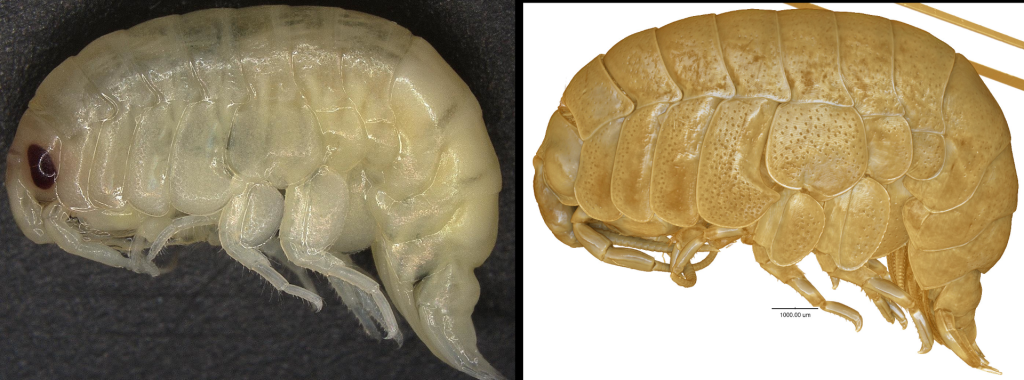by EH
In a breakthrough discovery, an international research team led by the University of Trieste has identified a new species of Antarctic shrimp, named Orchomenella rinamontiae. This newly described crustacean could become a critical tool for monitoring the impacts of climate change and human activity on marine ecosystems in one of Earth’s most isolated regions.
The shrimp, discovered near the Italian Antarctic Station Mario Zucchelli during the XXXIII Italian Antarctic Expedition in Terra Nova Bay, belongs to the order Amphipoda. Piero Giulianini, a zoologist and professor at the University of Trieste’s Department of Life Sciences, led the research. Giulianini and his team were initially investigating how Antarctic shrimp respond to rising sea temperatures when they stumbled upon this previously unknown species.

“This discovery opens up new possibilities for understanding marine biodiversity in the harshest environments on the planet,” said Giulianini. “Our initial goal was to study how existing shrimp species adapt to warming seas. However, we found that some samples belonged to a new species altogether.”
The newly identified shrimp, Orchomenella rinamontiae, belongs to a group of scavenging shrimp that play a crucial role in Antarctic marine ecosystems. These shrimp help in breaking down and dispersing food, influencing the health and diversity of their environments. Tracking their abundance and diversity can provide insights into the broader effects of climate change on marine communities.
Researchers used advanced X-ray microtomography, an imaging technique that provides high-resolution three-dimensional images, to study the new species. This method allows scientists to analyze samples digitally, avoiding potential distortions that can occur with physical handling. The use of this technology not only enabled a detailed examination of the shrimp but also highlighted its potential to transform the study of biological samples.
The discovery adds to the growing catalog of Antarctic marine species and underscores the importance of integrating physical and genetic analyses in species classification. The advanced imaging techniques used could soon become standard practice in biodiversity research, potentially accelerating the identification and classification of new species.
The new shrimp species was named Orchomenella rinamontiae in honor of Rina Monti, a pioneering Italian zoologist who, in 1907, became the first woman to secure a chair at the University of Sassari. This naming tribute acknowledges Monti’s significant contributions to the field of zoology.
The research team from the University of Trieste included experts from the Applied Zoology and Applied Genomics groups, with additional contributions from Claude de Broyer of the Royal Belgian Institute of Natural Sciences and Ed Hendrycks of the Canadian Museum of Nature. Analysis of the microtomography data was also supported by Sandro Donato and Anita Giglio from the University of Calabria.
The full study, titled “A New Antarctic Species of Orchomenella G.O. Sars, 1890 (Amphipoda: Lysianassoidea: Tryphosidae): Is Phase-Contrast Micro-Tomography a Mature Technique for Digital Holotypes?” is published in the Zoological Journal of the Linnean Society. The research represents a significant step forward in our understanding of Antarctic marine life and its response to global environmental changes.





























